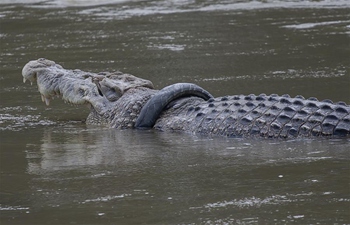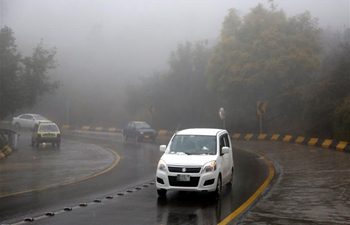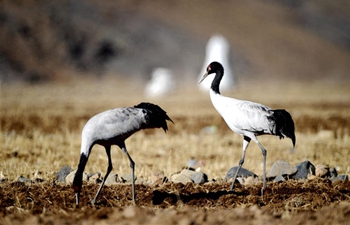ADDIS ABABA, Jan. 14 (Xinhua) -- The United Nations Food and Agriculture Organization (FAO) on Tuesday warned that "numerous and very large" desert locust swarms have posed an unprecedented threat to food security and livelihoods in Ethiopia and neighboring Horn of Africa countries.
"Numerous and very large swarms pose an unprecedented threat to food security and livelihoods in the Horn of Africa," the FAO said in a statement, as it emphasized the spread of desert locust across parts of Ethiopia and other Horn of Africa countries mainly Somalia, South Sudan and Kenya.
In Ethiopia, immature swarms have continued to form and move in the eastern regions of Harar and various places in Ethiopia's Somali region such as Jijiga, Warder, Kebridehar, Gode in the Ogaden, according to the FAO.
It also warned that immature swarms are also present further south of Ethiopia's largest Oromia region, as well as on the edge of the Rift Valley area, mainly in Borena zone near Teltele and Yabello.
"Some swarms have started to mature in the Gode area. More swarms are expected to appear in the southern parts of Oromia and Somali regions and in the southwest region of SNNPR, where they are likely to mature and lay eggs," the FAO has warned.
"In the Horn of Africa, there has been a significant and extremely dangerous increase in swarm activity during the past week," FAO indicated, adding that large immature swarms are spreading from the initial invasion areas of the northeast to Wajir and Garissa, west along the Ethiopian border (Moyale and Marsabit counties) and southwest into central areas north of mount Kenya, such as Isiolo, Samburu, Meru and most recently Laikipia counties.
Noting that some swarms may reach northeast Uganda and southeast South Sudan, FAO also stressed that "there is an unprecedented threat to food security and livelihoods" in all the affected areas.
It also stressed that once floodwaters recede, ecological conditions will be favorable for several months of breeding that is expected to cause a significant increase in locusts by spring.
Last month, the FAO had disclosed that desert locusts have invaded nearly 430 square-km of land in Ethiopia's major crop-producing regions over the past two months, consuming about 1.3 million metric tons of vegetation.
The desert locust, which is considered as the "most dangerous of the nearly one dozen species of locusts," is a major food security peril in desert areas across 20 countries, stretching from west Africa all the way to India, covering nearly 16 million square kilometers, according to the FAO.













